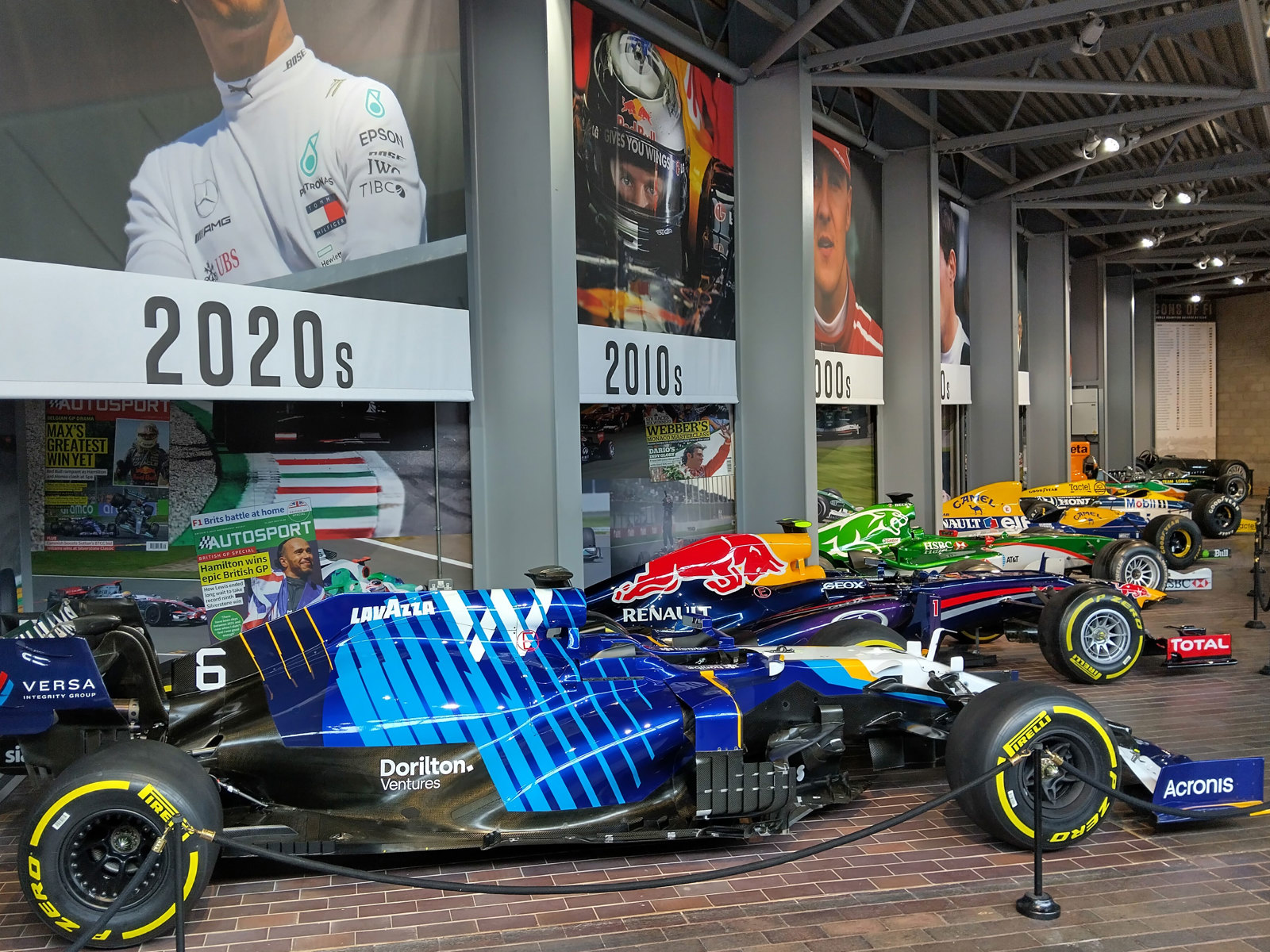
Experience the thrill of speed
![]()
Experience the thrill of Formula 1 and celebrate the legendary icons of speed at the National Motor Museum, Beaulieu.
From the 24th May until 2nd November 2025 a new special display at the Museum marks 75 years since the inaugural Formula 1 World Drivers’ Championship in 1950. The temporary exhibition brings together nine iconic Formula 1 racing cars, including cars from World Championship winning teams such as BRM, Lotus, Williams and Ferrari. Each vehicle represents a decade of technical and sporting development in Formula 1’s illustrious history – as well as some of its most legendary drivers.
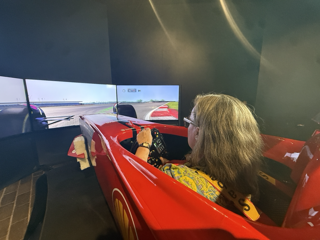
Experience a drive in a F1 car
The National Motor Museum’s celebration of this motorsport anniversary also includes an opportunity to experience the thrill of driving the powerful machines with an immersive adrenaline-fuelled Formula 1 simulator.
The state-of-the art simulator sessions will give the rush of sitting in the cockpit of an F1 car, just like a real racing drive. The sim racing experiences will be available as an addition to the Beaulieu attraction ticket, and visitors will get the opportunity to compete for a monthly Scalextric prize for the best lap time around the realistic circuit.
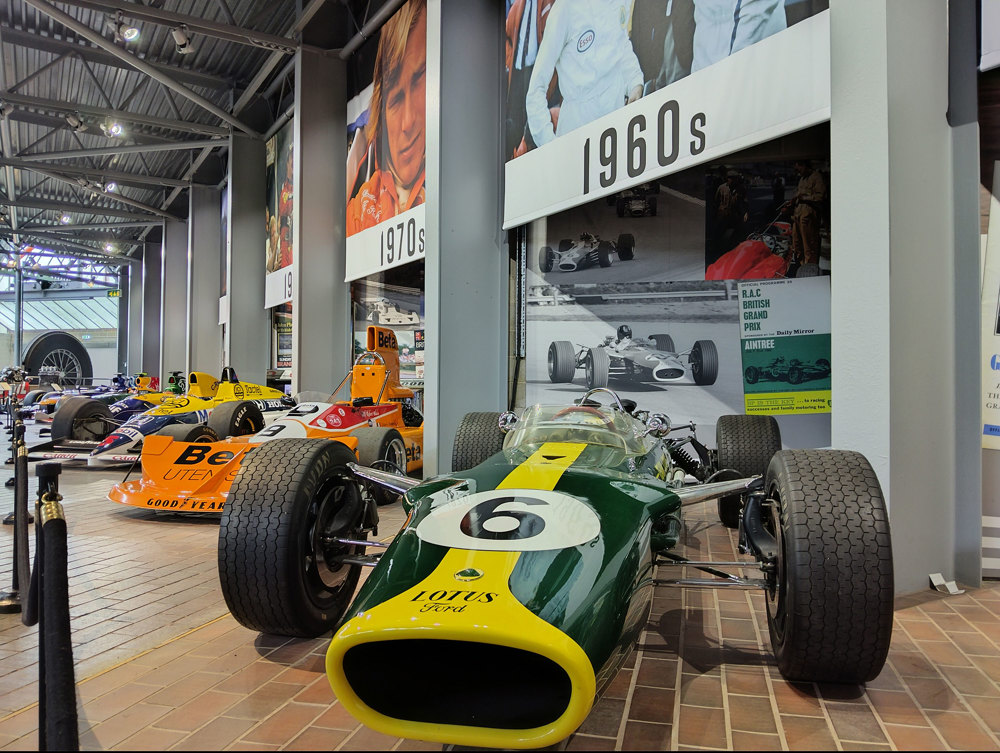

Supported by Indigo Blue European

The Icons of Formula 1 display headline sponsor is logistics company Indigo-Blue who work with the National Motor Museum to transport historic cars to events across Britain.
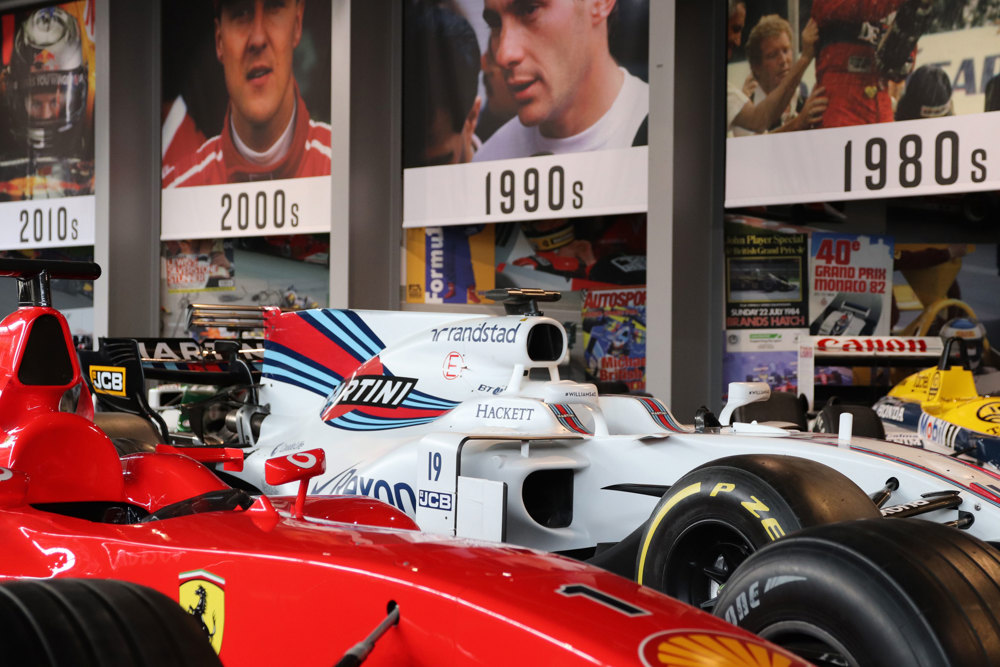

75 years of Formula 1 Drivers’ Championship
The first race in the newly created Formula 1 World Championship of Drivers was on the 13th May 1950 at Silverstone in Northamptonshire. Victory went to Italy’s Guiseppe ‘Nino’ Farina at the wheel of an Alfa Romeo. He went on to win the first ever World Championship title.
Grand Prix racing in 1950 was very different from today. There were seven World Championship races including the Indianapolis 500, cars had front-engines, tracks were lined with straw bales, while drivers wore polo shirts. There were no seat belts, and few wore crash helmets.
Over 75 years there have been countless moments of excitement and glory, countered by times of tragedy and despair.
Today the Formula 1 World Championship boasts a global audience of over 450 million. There are 24 World Championship races. The cars are sophisticated, rear-engined, 1.6 litre turbo-charged hybrids of up to 1,000bhp with aerodynamic aids. Circuits have crash barriers to protect both drivers and spectators and drivers with split-second responses are protected by fireproof suits, crash helmets, neck braces and harnesses, and Halo safety cages on the cars.
Formula 1 Icons brought together
Each vehicle in the display represents a decade of technical and sporting development in Formula 1’s illustrious history.
-
![BRM V16, 1950 Great Britain]()
BRM V16, 1950, Great Britain. The BRM was a milestone on the path to Britain’s dominance of the sport of Formula 1. The car was driven by Juan Manuel Fangio and Stirling Moss and finished in the 1951 British Grand Prix. Manufacturer: British Racing Motors, Bourne. Owner: National Motor Museum Trust -
![Lotus 49, 1967]()
Lotus 49, 1967 Great Britain. The Lotus 49 was the first car to use the legendary Ford-Cosworth DFV engine, which formed an integral part of the vehicle’s chassis. It won its first race, the 1967 Dutch Grand Prix, driven by Jim Clark. This car, chassis R3, was built overnight for Graham Hill to drive in the 1967 British Grand Prix at Silverstone. Manufacturer: Team Lotus International Ltd, Hethel. Owner: National Motor Museum Trust -
![McLaren M23/12]()
McLaren M23/12 The British built McLaren M23 was one of the outstanding Formula One cars of the 1970s. Designed by Gordon Coppuck, M23s raced from 1973 - 1977. This M23/12 was used by Jochen Mass during the 1977, finishing second in Sweden, ninth in France and fourth in both Spain and Monaco. It is still raced today, competing in the Monaco Historic meeting and the Masters F1 Championship, which it won in 2021. With a 2,994cc Ford Cosworth engine it is typical of so many Formula One cars of the 1970s. -
![Williams FW11 Honda, 1986]()
Williams FW11 Honda, 1986 Great Britain. The FW11’s turbo-charged 1.5 litre Honda V6 engine was, at the time, the most powerful in F1. Driven by Nelson Piquet and Nigel Mansell who battled Ayrton Senna and Alain Prost for the 1986 championship. Manufacturer: Williams Grand Prix Engineering, Didcot. Owner: Williams Racing. -
![Jaguar R5, 2004]()
Jaguar R5, 2004 Great Britain. The Jaguar team had its origins as the Stewart Grand Prix team that had been founded by three-time World Champion Sir Jackie Stewart and his son Paul. The Jaguar R5 was driven in the 2004 season by Mark Weber and Christian Klein. At the end of the 2004 season Ford sold the Jaguar team to Red Bull. As Red Bull Racing the team have gone on to multiple World Championship titles. Manufacturer: Jaguar Racing F1 Team, Milton Keynes. Owner: Jaguar Daimler Heritage Trust -
![Ferrari F2002, 2002]()
Ferrari F2002, 2002 Italy. Ferrari have been part of the World Championship since the very beginning in 1950. The Maranello built cars still carry traditional Italian racing red livery. The F2002 was particularly successful, taking Michael Schumacher to ten Grand Prix victories in 2002 and a further victory at the San Marino Grand Prix in the 2003 Championship. Manufacturer: Scuderia Ferrari, Maranello. Owner: Meridien Modena -
![Red Bull RB9, 2013]()
Red Bull RB9, 2013 Great Britain. Designed by Adrian Newey, and driven by Sebastian Vettel and Mark Webber, the Red Bull RB9 was the dominant car of the 2013 season. Vettel won 13 races on his way to securing his fourth consecutive World Championship title and Red Bull’s fourth consecutive Constructors’ title. The RB9 was powered by a Renault/Mecachrome V8 engine. Manufacturer: Red Bull Racing, Milton Keynes. Owner: Red Bull Racing -
![Williams FW15C Renault, 1993]()
Williams FW15C Renault, 1993. Designed by Adrian Newey & Patrick Head, the Williams FW15C is one of the most technologically advanced racing cars ever built. Driven by Alain Prost & Damon Hill, it became the dominant car of the 1993 F1 season. This car, chassis 01, was used for testing, carries the markings of David Coulthard, the Williams test driver in 1993 & 1994. Coulthard made his F1 race debut at the 1994 Spanish Grand Prix. Manufacturer: Williams Grand Prix Engineering. Owner: Williams Racing -
![Williams FW43B, 2021]()
Williams FW43B, 2021 GB. 2021 was the first season following the sale of the Williams team to a US investment company by founder Frank Williams. Williams’ drivers for 2021 were Nicholas Latifi & George Russell. Russell was awarded a 2nd place in the Belgian Grand Prix, the first podium finish for Williams since 2017. The FW43B exhibits many of the features of a modern Formula 1 car, with carbon fibre chassis, hybrid turbo-charged 1.6 litre engine. Manufacturer: Williams Racing. Owner: Williams Racing -
![March 761, 1976]()
PLEASE NOTE THIS CAR HAS NOW RETURNED TO ITS OWNER March 761, 1976 Great Britain. The Ford Cosworth DFV powered 761, designed by Robin Herd was driven by Italian drivers Vittorio Brambilla, Lella Lombardi as well as the great Swedish driver Ronnie Peterson – who won the 1976 Italian Grand Prix. Manufacturer: March Engineering, Bicester. Owner: Robert Blain
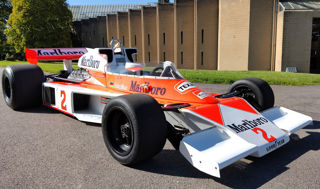
Latest News
Whilst the March 761 has returned to its owner to take part in motorsport around Europe, we welcome a new car in the 1970s slot - the 1977 McLaren M23 driven by German race driver Jochen Mass, who sadly died in May 2025.
Buy tickets to see Icons of Formula 1
The icons of formula 1 display is included in the Beaulieu attraction ticket. Tickets for the Formula 1 simulator are available at the Museum's information desk on arrival.
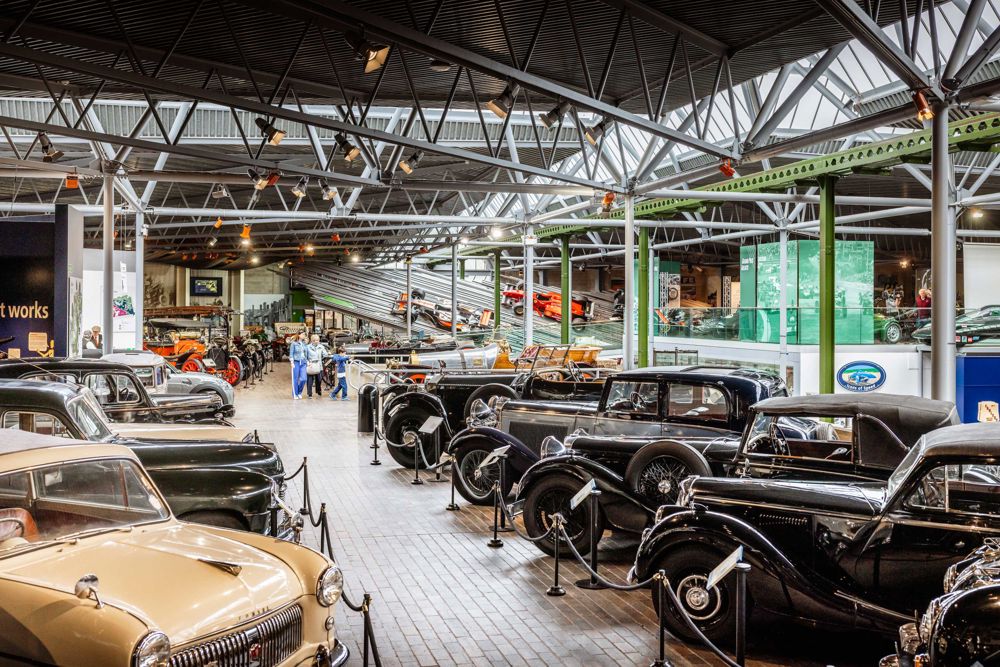
Subscribe for updates
Get our latest news and events straight to your inbox.









